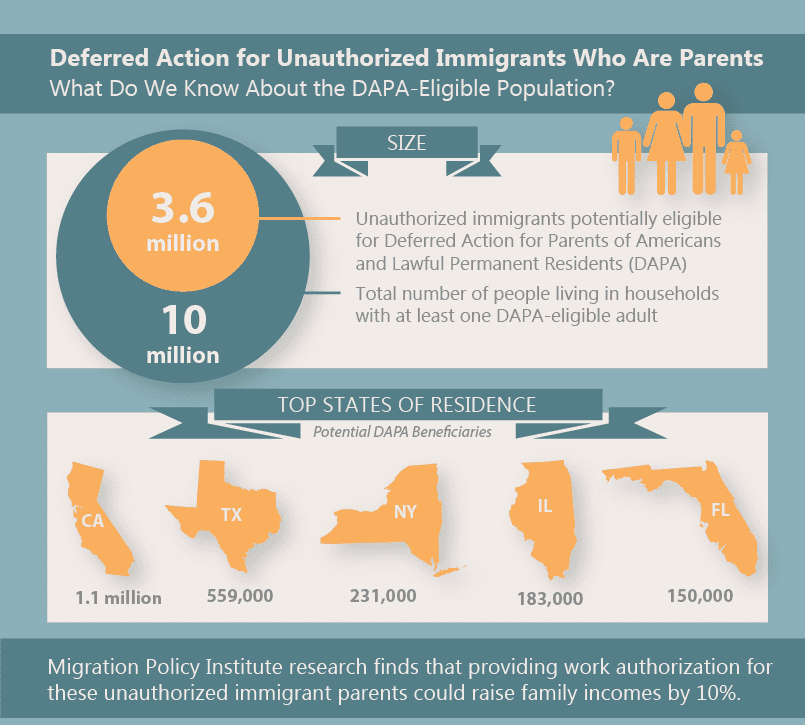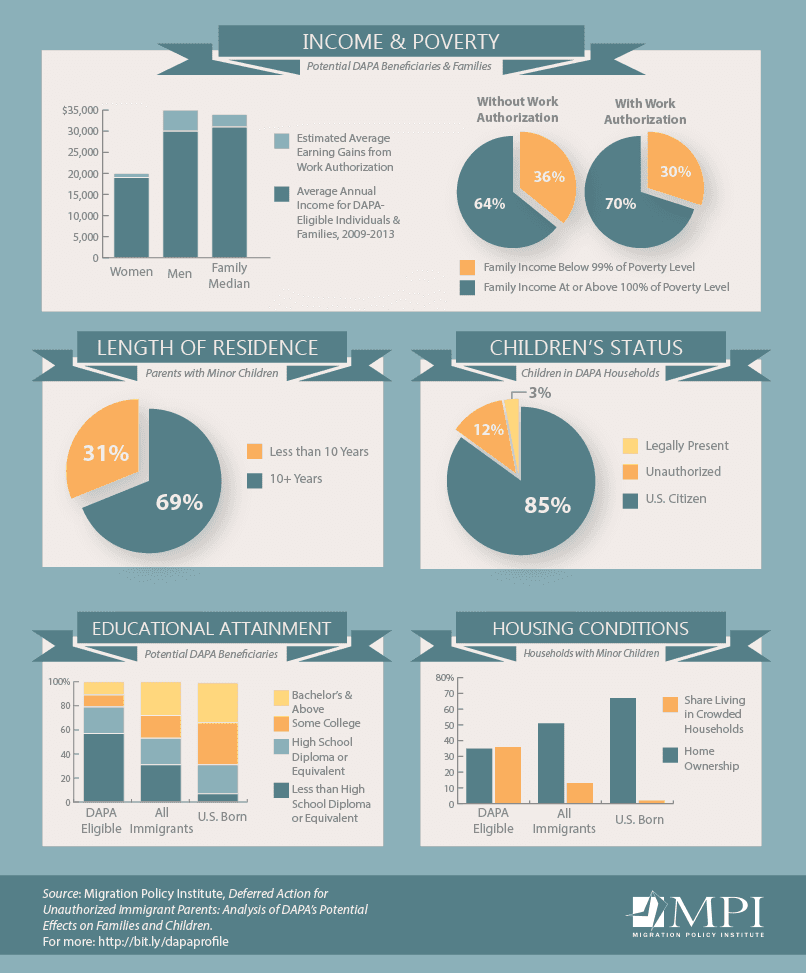April 2016
In November 2014, the Obama administration announced the Deferred Action for Parents of Americans and Lawful Permanent Residents (DAPA) program, which would protect from deportation and provide eligibility for work authorization to as many as 3.6 million unauthorized immigrants, according to MPI estimates. Unauthorized immigrants who are parents of U.S. citizens or lawful permanent residents (LPRs) would qualify for deferred action for three years if they meet certain other requirements.
The Supreme Court in April 2016 is expected to hear arguments in the administration’s appeal of a lower court order blocking implementation of DAPA and a related expansion of the existing Deferred Action for Childhood Arrivals (DACA) program. The justices’ decision in the case, which began when Texas and 25 other states challenged the president’s authority to create the DAPA program and expand DACA, is expected in June 2016. If the high court permits DAPA to go forward, the program has the potential to improve the incomes and living standards for many unauthorized immigrant families through protection from deportation and eligibility for work authorization.
This infographic, based on findings from an MPI-Urban Institute report, shows key data on the populations that would be affected by DAPA. The report found that more than 10 million individuals live in households with at least one adult potentially eligible for DAPA, and that work authorization for those eligible for DAPA could lead to significant gains in income—10 percent per family, on average—and reductions in poverty for these immigrants and their families.


Source: Migration Policy Ins
- Deferred Action for Unauthorized Immigrant Parents: Analysis of DAPA’s Potential Effects on Families and Children
- 2021 Immigration Reform, DACA, and DAPA
- If Someone Currently Has DACA and It Expires Soon, Can They File for a Renewal?
- Repealing Birthright Citizenship: The Unintended Consequences
- What Does the TX Decision Mean?
